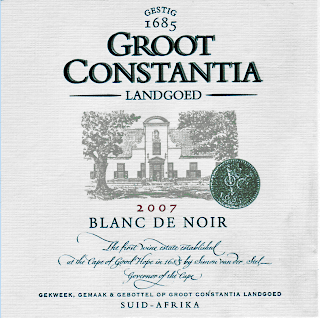I am gearing up for a trip to South Africa at the beginning of April to celebrate my birthday – I bought the ticket months ago and have slowly been setting up my itinerary. Everyone keeps asking me if I am planning to go on a safari and visit the lions. The answer is no. This is a wine trip.
Thus far, I am planning to spend a few days in Cape Town, hoping to wander the town, stumble upon good food, hike Table Mountain, and potentially drive down to the Cape of Good Hope to see penguins. Then, I am driving to Paarl to spend a few days visiting Backsberg, Glen Carlou, and a few others.
Paarl
Then, on my birthday, I leave the solo life behind and fly to Durban to visit a good friend of mine from college, Cheryl, who moved back this past year. That part of the trip-planning I’ve left up to her 🙂
see left. ignore my outfit.
I have been brushing up on my South African history, particularly as related to the wine industry, and I thought I’d share a few interesting nugglets of information here. If you are a history buff, keep reading.
1652 – the Dutch arrive at the Cape of Good Hope and set up an outpost on the Europe-India trade route
1659 – the first grapes on record are pressed
1679 – Simon van der Stel arrives and imposes the first wine-making regulations
1685 – van der Stel acquires Constantia, South Africa’s first internationally renowned winery, producing wines that were highly favored in the courts of Europe (Vin de Costance was Napoleon’s favorite wine)
1688-90 – After fleeing Europe, 200 French Huguenots establish Franschoek (the French corner, in Dutch), another wine-growing area in the Western Cape
throughout much of the 18th and early 19th c – SA establishes itself as a leading exporter of port- and sherry-style fortified wines, especially benefitting from Napoleon’s Continental System, which blockaded the British
post-Napoleon – sale crisis due to the low quality of wine, whose high yields and overproduction could not compete with the leading wines of Europe
late 19th c – phylloxera and mildew epidemics reach SA and ravage vineyards
the phylloxera louse
start of the 20th c – export trade market dries up, further decreasing production
1918 – Koöperatieve Wijnbouwers Vereniging, a winemakers’ cooperative, was founded to begin establishing wine controls
1924 – KWV given legal authority to fix the price of wine used to make brandy
1925 – the Pinotage grape was created by crossing Pinot Noir and Cinsault (known as Hermitage in SA) by viticulturalist Abraham Izak Perold
1940 – SA government fully transferred the supervision of the wine sector to the KWV, allowing it to determine wine prices, permissable yields, varieties, planting rights, and production methods, as well as to control the surpluses
1948 – apartheid established in SA
1959 – first call to boycott South African goods, including wine exports, as a response to apartheid
1980s – boycott fully established internationally
1992 – KWV quota system abandoned, granting winemakers greater creativity and flexibility to create quality wines of various depth and complexities
1994 – apartheid officially ends with the multi-racial democratic elections won by the African National Congress under Nelson Mandela
Mandela wins!
1994-now – huge increase in international demand for SA wines, as an affordable, quality commodity; this is reflected in the increased plantings of international varietals throughout the winegrowing regions of the Western Cape
More South Africa-oriented info hopefully to come over the next few weeks. Test on Tuesday.
Sources: Andre Domine’s WINE; wikipedia; and various (see links)






